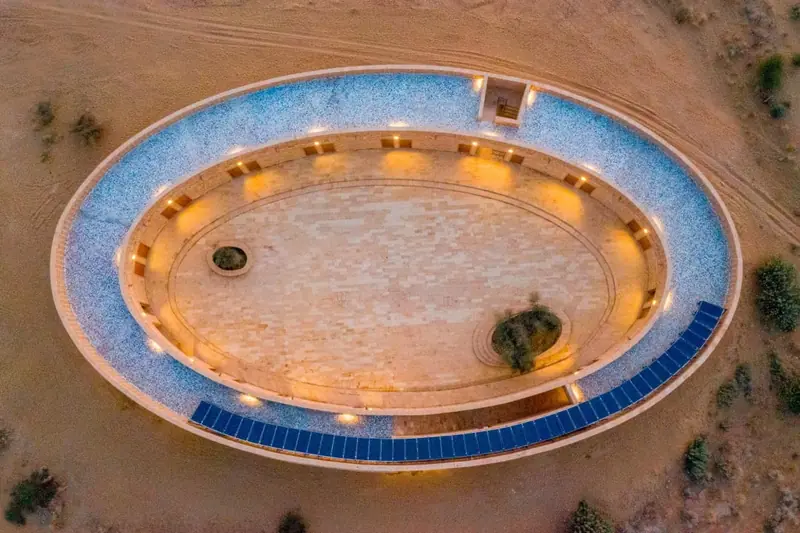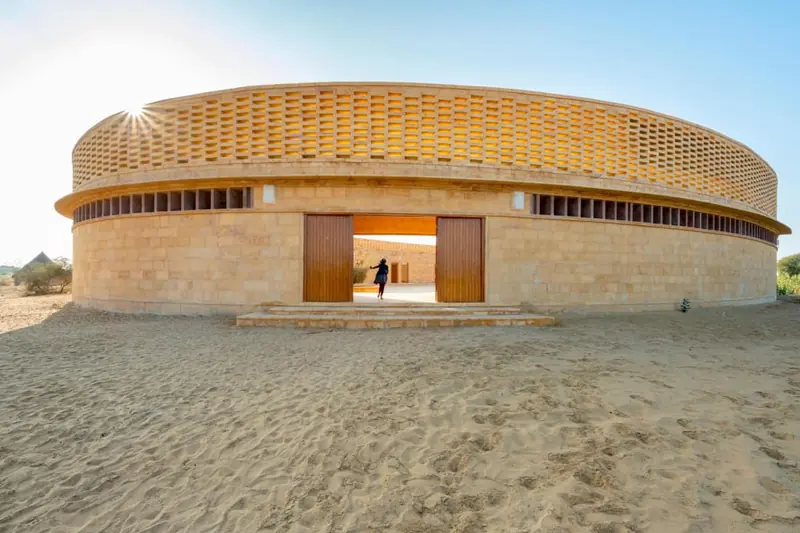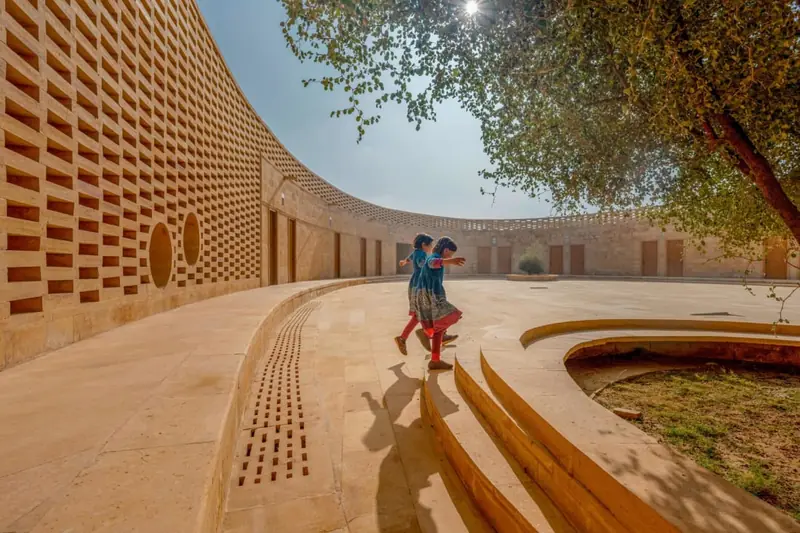
Thanks to its yellow sandstone structures, Jaisalmer in northern India is also known as the Golden City. In the summer, temperatures in this region can soar to 49 degrees Celsius.
Here, in the heart of the Thar Desert, a school has emerged that resembles an extraterrestrial object. In this new school, Rajkumari Ratnawati, it remains cool even in the sweltering heat. This is all thanks to New York architect Diana Kellogg, who designed the building in accordance with the ancient construction traditions of the area.

Kellogg gave the building an elliptical shape, which she associates with femininity and infinity. The educational institution for girls spans an area of 836 square meters. It consists of three oval structures and features a spacious inner courtyard paved with yellow stone. The floors inside are adorned with blue mosaics. The school includes 10 classrooms, a computer center, and all the necessary amenities for its students. Currently, 120 girls aged 5 to 16 are enrolled, although the facility can accommodate up to 400 students.
Diana Kellogg’s studio developed the architecture and design at the request of the American nonprofit organization CITTA, which provides economic and educational support to women in remote and marginalized areas. This project aimed to expand educational opportunities for girls in a region where the literacy rate among women is the lowest in India, according to CNN.
Sustainability and Natural Cooling
Due to the climate crisis, drought periods in the Thar Desert are becoming increasingly prolonged and intense. Thus, the project’s author, who typically designs elite residential complexes, set herself an ambitious task. In the school project, she decided to blend traditional Jaisalmer architecture with modern design. The new building was meant to symbolize the resilience of the desert.
In addition to technological innovations, Diana Kellogg adopted cooling methods that have been known here since ancient times. She chose local sandstone, which is climate-resistant and has historically been used by local builders, as the primary construction material. This includes the fort of Jaisalmer, a part of the city that houses a quarter of its population and is a UNESCO World Heritage site.
Sandstone is inexpensive and abundant in this area. The material retains heat and keeps the interior cool. Among the traditional methods employed by Diana Kellogg Architects are plastering the interior walls with lime, a porous and natural cooling material that helps release moisture.

Diana Kellogg drew inspiration from other buildings in the area and, using authentic techniques, made the walls perforated or mesh-like. These screens promote shading and accelerate airflow, thereby cooling the inner courtyard. Additionally, a canopy with solar panels also provides shade.
According to Diana Kellogg, the cooling methods used in the new school could be applied not only in this region, but their effectiveness will vary from place to place. For instance, different types of sandstone will regulate temperature differently than those found and used in Jaisalmer.
Interestingly, an air conditioning system was deliberately not installed in the building. This decision was made not only due to the environmental impact of air conditioners but also because they are not popular in this area.

